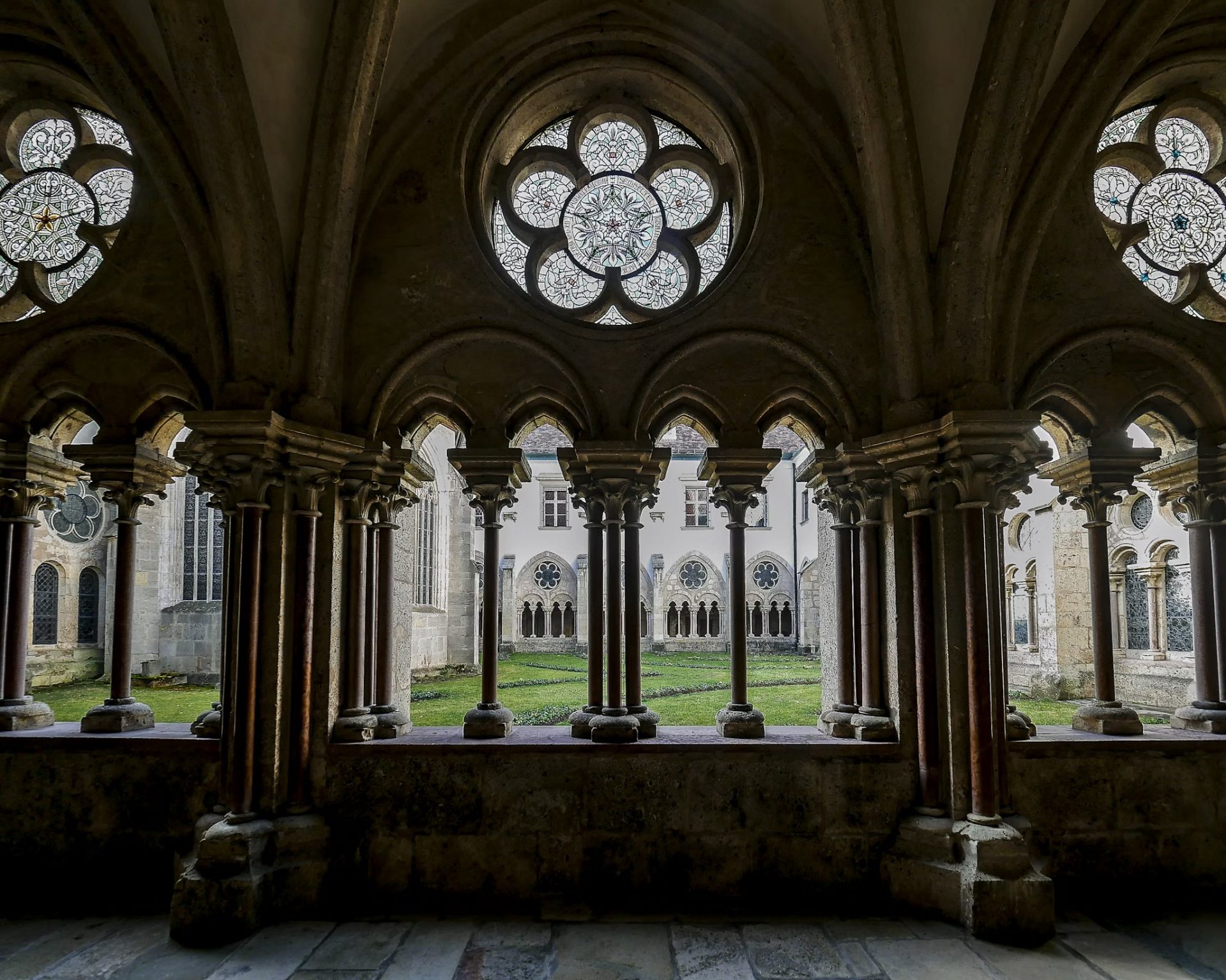Experience Travel Insights
Uncorking 900 Years of Faith: A Divine Legacy in the Thermen Region for Wine at Stift Heiligenkreuz
by Long Lin-Maurer • September 24, 2025

Stift Heiligenkreuz and the Thermenregion: A Legacy of Austrian Wine
Just a short journey south of Vienna, where the city’s imperial grandeur gives way to the rolling foothills of the Vienna Woods (Wienerwald), lies a wine region of profound historical significance: the Thermenregion. Often overlooked, this is a land where ancient traditions and a unique viticultural heritage converge. It is a landscape where every glass tells a story stretching back nearly a thousand years, a story intimately entwined with the Thermen region for wine Stift Heiligenkreuz and the enduring legacy of its Cistercian monks.
Come and experience travel!
Personally designed, seamlessly delivered – your journey, our expertise!
We are a boutique travel agency and consultancy specializing in Hub & Spoke Tours across Central Europe, the Benelux and the Dolomites.
A Land Forged by Water, Time, and Terroir
The region owes its name to the thermal sulfur springs that have drawn visitors to the spa towns of Baden and Bad Vöslau since antiquity. For winemakers, however, the true treasure lies in the soil. The geology is a complex tapestry, dominated by calcareous limestone soil from the ancient Tethys Sea, rich in fossilized minerals. This specific terroir, combined with the Pannonian climate from the east and cooling breezes from the Wienerwald, creates a perfectly balanced microclimate. It fosters long ripening periods, allowing grapes to develop deep complexity while retaining vibrant acidity—the hallmark of the Stift Heiligenkreuz vineyard in the Thermenregion. This is the foundation upon which centuries of winemaking have been built.
The Burgundian Connection: Cistercian Winemaking Pioneers
The story of quality wine in the Heiligenkreuz Monastery wine region is inseparable from its Cistercian monks. In 1133, Stift Heiligenkreuz (Abbey of the Holy Cross) was founded as a daughter house of Morimond Abbey in Burgundy. The Cistercians were not just men of faith; their mastery of Cistercian monks winemaking made them Europe’s foremost agricultural innovators. They brought with them a spiritual understanding of the land and, crucially, Burgundian grape varieties like Pinot Noir and St. Laurent.
With meticulous care, the monks identified the limestone-rich slopes as being remarkably similar to those of the Côte d’Or. They established the Freigut Thallern in 1141, making it one of Austria’s oldest wineries. This was a deliberate act of cultural transplantation. They documented soil types, observed ripening patterns, and perfected cellar techniques, understanding that wine is an expression of a specific place. They dedicated themselves to allowing this land to speak through the grapes they so carefully cultivated, establishing the Thermenregion’s Cistercian wine heritage.
The Stift Heiligenkreuz Winery Experience: Faith and Viticulture
To visit Stift Heiligenkreuz today is to step into a living continuum of history. As the world’s oldest continuously inhabited Cistercian monastery, it is a place of serene spiritual power. The Romanesque nave, Gothic choir, and stunning 13th-century cloister transport visitors to the heart of the medieval world, where the air hums with the resonance of daily Gregorian chant.
This spiritual dedication is mirrored in their approach to the monastery wine Thermenregion Heiligenkreuz at the Weingut Stift Heiligenkreuz – Thallern. The vineyards are managed with a profound respect for nature, honoring their founders’ legacy. A visit here is more than a simple tasting; the full Stift Heiligenkreuz winery experience is an immersion into the philosophy that connects the sacred and the earthly. To walk the historic cellars is to feel 900 years of tradition, understanding that the wine from Heiligenkreuz Monastery Austria in your glass is the product of an unbroken chain of knowledge and faith.
Autochthonous Jewels: Zierfandler and Rotgipfler
While the Burgundian varieties remain pillars, the Thermenregion’s most unique contribution to the wine world comes from its two remarkable autochthonous white grapes: Zierfandler and Rotgipfler. These varieties are found almost nowhere else on earth, a true expression of this specific corner of Austria.
Come and experience travel!
We design bespoke travel experiences with a perfect balance of cultural depth, efficiency and comfort.
Specializing in seamless hub-and-spoke journeys, we create well-paced, immersive itineraries tailored to your interests.
Zierfandler (or Spätrot) produces wines with exotic aromatics of orange zest, tropical fruit, and honey. Its traditional partner, Rotgipfler, provides body, structure, and vibrant acidity, with flavors of pear and quince. When blended, often in a classic cuvée known as Spätrot-Rotgipfler, they create a wine of extraordinary depth and longevity. These are contemplative wines that reward the patient palate with evolving layers of flavor. Discovering the Thermenregion wine from Heiligenkreuz Abbey is to uncover a hidden secret of the wine world.
The Heurige Culture: An Invitation to the Table
The full expression of the region’s culture is found in its legendary Heurigen, or wine taverns. Experiencing the local Heurige culture is a uniquely Austrian institution where vintners serve their own new wine with a buffet of regional specialties. These are extensions of the winemaker’s home—places of rustic charm and genuine conviviality in towns like Gumpoldskirchen or Pfaffstätten.
Sitting under a chestnut tree, sharing a platter of cured meats and local cheeses with a glass of the latest vintage from the Heiligenkreuz Abbey vineyards, is to experience the soul of Austrian hospitality. This is where an appreciation for the region’s history transforms into a sensory and social experience. A wine tasting in Thermenregion’s Stift Heiligenkreuz can extend into these taverns, offering a chance to connect with the families who have shaped this landscape for generations.
A Tapestry of Sensation and Story
The Austrian wine Thermenregion Stift Heiligenkreuz is far more than a tasting destination. It is a deeply layered cultural landscape that rewards the curious traveler with a narrative of faith, innovation, and tradition. It offers a journey that engages the intellect with its history, delights the senses with its unique wines, and touches the spirit with the timeless tranquility of Stift Heiligenkreuz. To truly appreciate its essence is to understand the intricate threads connecting a Roman thermal spring, a Cistercian prayer, a Burgundian vine, and a glass of Gumpoldskirchen wine enjoyed in a sun-dappled courtyard. It is a story waiting to be uncorked.
Thermenregion for Wine and Stift Heiligenkreuz: A Curated Selection of Cultural and Historical Sources
- The Official History of Stift Heiligenkreuz
Detailed chronicle of the Cistercian Abbey of Heiligenkreuz, founded in 1133, highlighting its spiritual, architectural, and economic development, including its historical involvement in viticulture.
- Official Profile of the Thermenregion DAC
A comprehensive overview of the Thermenregion DAC, detailing its unique climate, geological features, specific wine law, and signature grape varieties crucial for understanding its distinctive terroir.
- Cistercian Monastic Winemaking History
An insightful exploration of the profound historical influence of the Cistercian order, including monasteries like Stift Heiligenkreuz, on European viticulture and winemaking techniques since the Middle Ages.
- Stift Heiligenkreuz on Wikipedia (German)
A detailed encyclopedic entry on the Cistercian Abbey of Heiligenkreuz, covering its founding, architecture, art treasures, spiritual life, and historical significance within the Austrian cultural landscape.
- Thermenregion on Wikipedia (German)
General information about the Thermenregion, encompassing its geographical location south of Vienna, its thermal springs, and its historical development as an agricultural and renowned wine-growing area.
- Austrian Wine Marketing Board Profile: Thermenregion
The official presentation of the Thermenregion by the Austrian Wine Marketing Board, offering insights into its viticultural traditions, distinct terroir, and quality-controlled wine production.
- Geological Overview of the Vienna Basin
An expert overview from the Geological Survey of Austria (GBA) on the geological features of the Vienna Basin, providing scientific context for the unique soil compositions and microclimates that define the Thermenregion’s terroir.
- Zierfandler Grape Variety Profile by Austrian Wine Marketing Board
Detailed information on Zierfandler, one of the indigenous white grape varieties of the Thermenregion, exploring its characteristics, historical cultivation, and its contribution to unique regional wine styles.
- Rotgipfler Grape Variety Profile by Austrian Wine Marketing Board
An in-depth look at Rotgipfler, another signature white varietal of the Thermenregion, outlining its sensory profile, viticultural requirements, and historical significance alongside Zierfandler.
- Cultural Heritage of the Vienna Woods (Biosphere Park Wienerwald)
Information on the rich cultural heritage of the Vienna Woods region, providing a broader context for the Thermenregion and Stift Heiligenkreuz’s historical and cultural embeddedness within this protected landscape.
